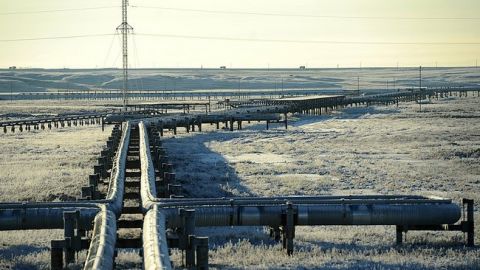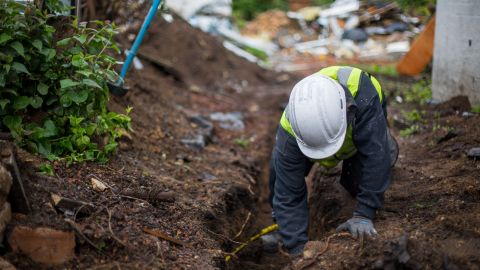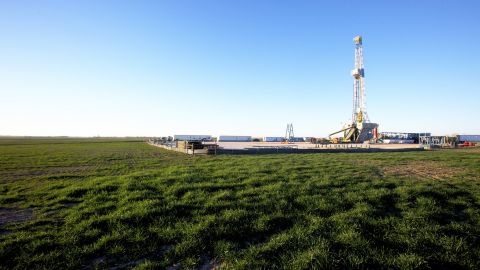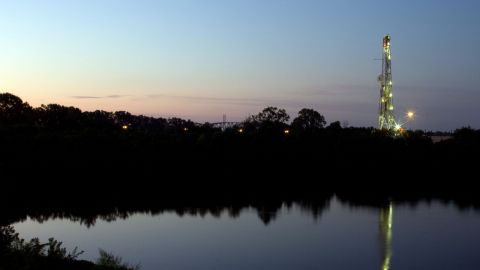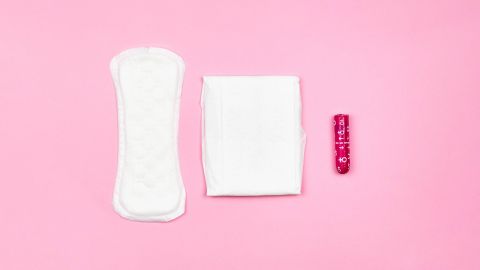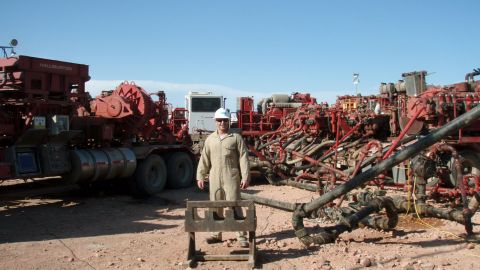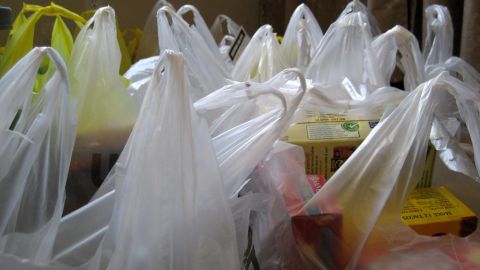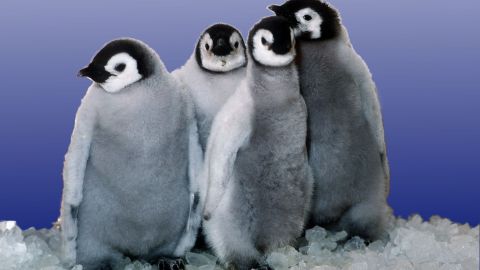AD READER: This episode of The Sweaty Penguin is brought to you by vampires. Do you prefer the dark to the light sleeping until noon and never eating full meals? You might be a vampire, but you’re probably just depressed. Try vampirism today!
ETHAN: Welcome to episode 111 of the sweaty penguin Antarctica’s hottest podcast. I’m your host, Ethan Brown. Sorry for the delay in getting this episode out. I have been quite sick this week. So took a bit longer to get this one ready. Thank you so much to Megan, our editor for rolling with the punches as I tried to get this together.
ETHAN: Today we are talking about drought. You know, the thing that makes Arizona look like Larry David’s neck. Now if you’re thinking that this is a huge topic to cover in one episode, you’re right. A minimum 12 Step skincare routine is key to maintaining all day neck hydration.
I wanted to give you something to start with on drought though, since it comes up in so many other podcasts we do. And as we speak right now, drought has been a major topic of discussion. Here’s a new story from Tuesday in the San Francisco area.
CLIP 1: In spite of all of that California is actually still in a drought because first of all, if you just jam packed here with a closer look at why All right? Before I become that guy who says you know, we’re still in a drought, wah wah
ETHAN: Okay, what do you mean that guy? Seriously, are you telling me you’ve run into multiple people in your life who were buzz kills, because they mentioned the drought during a rainstorm? First of all, if you’re having a conversation about the weather, the chances of this interaction being fun are pretty much gone. That’s on both of you. But even if talking about the weather is riveting, this topic of conversation would barely ever come up. Because we barely get rain in California. I don’t know how all three of them have the idea that there’s this stereotypical guy who reminds people during rainstorms that there’s a drought, but I promise that scenario would barely even come up. That said, this news clip points out a couple important things. One, California is still in a drought, as is much of the United States and the world and to a lot of people don’t fully understand what a drought actually means. So we won’t even come close to scratching the surface of every drought issue today, but we will try to do a little drought 101. We’ll discuss how climate change makes them worse some of the impacts they have and some potential strategies to deal with them.
The sweaty penguin is presented by peril and promise a public media initiative from the WNET group in New York for reporting on the issues and solutions around climate change. You can learn more at pbs.org/peril and promise if you want to take two minutes to help out the sweaty Penguin, you can either leave us a five star rating and review or join our patreon@patreon.com slash the sweaty penguin doing either earns you a special shout out at the end of the show, joining the Patreon gets you merch bonus content and a whole lot more.
ETHAN: So what exactly is a drought? It’s an interesting question, right? If someone asked you if you knew what a drought was, you say yes. But if you were asked to define it, that would be a bit more difficult. And you’re not alone. According to some early research in the 1980s, there are more than 150 published definitions of drought with differences between regions needs and approaches. That’s even more definitions than the word situation ship. But eventually, it consensus in the great drought debate was formed. And now a drought is generally defined as a deficiency of precipitation over an extended period of time, usually a season or more resulting in a water shortage.
ETHAN: But what causes this deficiency? Technically, the clouds just get really annoyed with humans leaving the water on while shaving and go on strike. Then, you know someone takes a two minute shower and the clouds decided to give us another chance. Now, that’s not it.
Now, hilariously, when you Google what causes a drought, almost every result says a drought is caused by lack of precipitation. Really? What’s my sadness, caused by a lack of serotonin?
And When I did more digging, I found some very vague explanations, but nothing awesome. I felt like a five year old trying to figure out where babies come from. But I think part of the reason for that is we can’t predict drugs. We know what factors play in, but you know where they often happen. But we still have a bit to learn. That said, I tried my best to wrap my head around a few of the primary causes. As I always say, I’m not a meteorologist. But let’s dive in and see how to do it.
ETHAN: Our atmosphere contains a whole bunch of shells, the stratosphere, the meso sphere, the tortoise, the oil company, the pasta shape, but the smallest shell that contains all of our weather is called the troposphere. I’m sure you’ve heard before that warm air rises, or felted. In the summer, if your room is upstairs and you have no AC. So if you go to the equator, where the air is the warmest that air rises, and it keeps rising until it reaches the top of the troposphere. Depending on where on earth you are, that can be anywhere from 30,000 to 60,000 feet tall, or the minimum height to get a match on hinge. Seriously, you should see how many matches the stratosphere has, it’s impressive. Once that air gets as high as it can go, it starts to spread out. It moves north and it moves south. And as it goes, it starts to cool off. What does that mean? The air starts sinking. So what we see is that latitudes of about 30 degrees north and 30 degrees south, that air is now traveling down. By the time it reaches the surface of the Earth, the same thing happens where it dissipates again, some air returns to the equator where the cycle repeats, some air goes poleward. And we see a whole new cycle where it reaches 60 degrees north and 60 degrees south and rises again. And then that air dissipates and some of that air ends up at the north or south pole where it gets really cold sinks to the ground and gives us our third and final cycle, or six cycles, I should say three in the northern hemisphere, and three in the southern hemisphere.
ETHAN: What does that mean for rain? Remember our water cycle from elementary school evaporation condensation precipitation, not to be confused with the far more popular water cycle, drink pee mistaken for yellow Gatorade and drink again. So where air is sinking around 30 degrees north and south and around the polls, it creates an area of high pressure, the air is pushing down on everything else. It’s like the LSAT test monitor that just stares at you the whole time when there’s 400 other people in the room. That means water vapor isn’t going to rise up as easily. And as a result, it won’t condense. It won’t turn into clouds. And if you think about it, to take 30 degrees north as an example, you have the Sahara Desert, you have the Middle East, you have SoCal, you have all these notoriously dry regions. And it seems scones come from 30 degrees north to and on the flip side, at the equator, you’ve got rain forests and all these rainy regions. at 60 degrees north you have countries like the UK, which get a lot of rain. Again, it’s not quite that simple. But this sort of sets a baseline of which regions will see more rain versus which we’ll see less.
ETHAN: Another factor that plays in is the jet stream. We talked about the jet stream last week. But quick review, when we have all that air blowing at that 30 or 60 degree latitude that ends up getting pulled East due to what we call the Coriolis Effect, which I’m not really explaining go listen to last week’s episode, but that eastward wind in circles the planet and separates colder air from warmer air. But jet streams don’t travel in a straight line. They meander, like me driving home at 3am Without an energy drink. due to temperature disparities or mountain ranges or other factors. Jet streams can swing north or swing south.
ETHAN: What does this have to do with drought? Well, jet streams typically carry weather systems around the world with them. And honestly kind of cool to know weather systems are carpooling. Like normally I don’t love three Three weeks of consecutive rainstorms, but it’s nice to know they’re making an effort, you know. That said, if the Jetstream has buckled in one direction or the other, you might have a high pressure system get stuck in place. Remember, high pressure systems are the ones that prevent the water cycle and can lead to drought. And in fact, high pressure systems in succession can even be enough themselves to deflect the jet stream. Now, that’s not going to last forever, but certainly it can be an explanation for drier than usual conditions within a given season.
ETHAN: And then there’s our natural climate oscillations. Perhaps the most well known of these would be the El Nino and La Nina oscillation. And I’m all out of keen Sierra jokes for now. So you’ll just have to hang in there. So we have the jet stream, which is blowing wind high up in the troposphere, then we have what are called trade winds, which occur closer to the surface. Fun fact, you can actually get your own trade wind for the price of three baseball cards. A rare silly band and a fourth round pick in the NFL Draft aren’t trades fun. Near the equator, the trade winds blow West. And as such, if we go to the Pacific Ocean, those winds will blow warm water at the surface West away from the Americas toward Asia and Australia. Then colder water from deep in the ocean will rise up and replenish. That process oscillates. During El Nino, the winds slow down and the eastern Pacific is left with warmer water, that water can evaporate and lead to wetter conditions in the American Southwest. During La Nina, which we’ve been experiencing for a few years now, the trade winds actually speed up bringing even more warm water west leading even more cold water to upwell. And as a result, areas like the American Southwest will experience drier conditions. El Nino and La Nina can also cause the jet stream to meander more in the Pacific, which opens up more chances for those high pressure systems to get stuck.
ETHAN: And the list of factors goes on and on. Most are way over my head. Some we may not even know. Remember, drought is the absence of something, not an event that people can track as it builds up. And that makes it really hard to predict, as compared to say a natural disaster. It’s often called a creeping phenomenon, because it slowly impacts the communities and environments around it as time goes on, you know, like Nicolas Cage. But the last thing I’ll mention is sometimes drought just has to do with a region’s geography. For instance, in the United States, the Gulf states might be at the same latitude as the American Southwest, but they’ve got ocean to the south, whereas California, Arizona, New Mexico and Western Texas have dry air from Mexico to the south. Furthermore, the Sierra Nevada often impedes rainy weather from taking hold in the West, and there isn’t a barrier of that magnitude in the east.
ETHAN: So you’ll notice as I go through that list of factors that I did not mention our favorite topic around here, climate change. That’s because climate change does not single handedly cause drept. However, climate change does make droughts longer, more frequent and more severe. It’s basically drought Viagra. So how does it do that? If we look at the weather systems we just discussed, there’s been some research into how climate change is affecting them. There’s research suggesting that circulating air that falls around 30 degrees north and south is getting pushed poleward there’s research suggesting the jet stream is getting wavier. There’s research suggesting El Nino and La Nina events are getting stronger. And while none of that is definitive, just because understanding links between climate and weather is really really difficult. We do know that these changes to our climate system would lead to worsened droughts.
ETHAN: But let’s go even simpler than that. How your temperatures lead to increased levels of evaporation. Unless I’m trying to boil water than no matter how high the temperature is. It just never happens. In lots of cases, that creates denser clouds, which hold more water which eventually lead to heavier precipitation. But in some regions, they lose that evaporated water and then it gets whisked away, and it rains somewhere else entirely. Remember, drought isn’t
Just about precipitation, it’s about the amount of water available. That said, regardless of whether it rains back down somewhere else, or all at once in the dry region, it still presents concerns. For this episode, we brought in Dr. Carla Chief, Director of the indigenous resilience Center at the University of Arizona. According to Dr. Chief, even when a dry spell is quenched by a massive storm, the drought is not necessarily over.
- CHIEF: I think one of the misconceptions around drought is the timing and quantity of water and how that changes through the year. For example, here in Arizona, in northern Arizona, there has been, you know, long periods of dry spells. And then you get these huge, large storms that result in floods, and just large quantities of water. And that becomes destructive. And it needs to be managed in a way that minimizes how destructive it can be. But also, it can be beneficial to people in terms of either harvesting that rain and using it for longer periods of time by storing the water. But then I think the misconception comes about in those short periods of time where people think, oh, it’s raining, it’s raining a lot. It’s you know, we’re out of this drought. And while we had a lot of rain, I think we should be out of this drought now, right. But in actuality, those short bursts of rain are not enough to get us out of the drought. It’s the long term trend, drying trend, that is really the period that we are in, and then just understanding that the quantity of the water is changing.
ETHAN: And especially given the rainfall we’ve just experienced in California. That’s an important point to make. Even if San Francisco news anchors make fun of you for it. When rain comes down all at once. Not only can that cause damage, but the soil becomes too saturated to hold water, or manmade water storage systems might overflow. And additionally, if temperatures are warmer such that water is coming down as rain instead of snow that leads to reduce snowpacks which can affect the flow of rivers throughout the year. All three of those things happened here in California. So while we don’t have all the answers about climate change, and drought, hopefully that can give you a sense of why climate change and drought are linked, and why there’s certainly reason to be concerned.
ETHAN: Now that we know how droughts happen and how climate change is affecting them, let’s look at some impacts. We obviously don’t have anywhere close to enough time to adequately cover them. That would be like me trying to cover every reason the Steelers should have fired their offensive coordinator just impossible in one episode. So we’re going to very quickly break down nine of the major impacts of drought. If you want to learn more about any specific impact obviously, you can do more reading or check out past episodes. But hopefully this gives you a nice broad overview. So here we go.
ROBOTIC VOICE: Number one: Agriculture
ETHAN: Imagine we’re in a choose your own adventure story. You’re a farmer and you grow some type of crop, raise some type of livestock. Now enter drought. With the lack of precipitation that comes with drought, you realize that you’re going to have to water your crops from another source. You can use irrigation from one a nearby river to a nearby lake, three a nearby stream or for groundwater. Now pick your answer. And regardless of what you picked, turn to page five, which reads drought strikes again, not only has it decreased precipitation, but it’s diminished the water source you turn to for irrigation, you’ve lost a significant number of crops from lack of water head to the nearest utility do not pass go do not collect 200 dot oops, sorry, that last part was just the monopoly card I was using as a bookmark and the totally real and not made up choose your adventure drought book.
ETHAN: Okay, back to the plot. You’ve lost crops from lack of water. And now you have to figure out how to save what you have left, head to page six to see what comes of these remaining crops. Page six reads drought can also contribute to insect outbreaks fires and changes in the rates of carbon nutrient and water cycling, which all play a role in successful agriculture. So you continue to lose more crops. Desperate, you start to spend money on more advanced irrigation or on drilling new wells. While simultaneously you’re spending more on feed and water for animals and the value of your land is decreasing. What happens now? Go to page seven to find out, Page seven reads you were declared bankrupt because you owed more than you could pay to either another player or to the bank. Oops, I’m reading from monopoly again, but you get the gist.
ETHAN: Now, this is a very dark choose your own adventure game, you might even say it gave you goosebumps. And while not every story ends like this, farmers still experienced serious economic consequences as a result of drought. The agricultural industry doesn’t care as much about how much water it gets from day to day, but rather how much it’ll get in a season or in a few years, something that is heavily impacted by long term drought. And not only are farmers impacted, but businesses that depend on farming, like tractor companies or animal feed stores may lose business when drought damages crops or livestock.
ROBOTIC VOICE: Issue two; transportation
ETHAN: advance token to the nearest railroad. Sorry, everyone, I’ve played a lot of monopoly recently. transportation impacts aren’t necessarily the first thing you think of when you think of drought. But drought affects everything. Ports and waterways that are crucial for transportation and supply chains can be impacted by decreased water levels. This leads to higher transportation costs, and even the need to develop entirely new routes. Higher temperatures lead to hotter roads, airport runways and rail lines, which can cause dangerous malfunctions or issues. Record breaking droughts have even led to melted tires. Aligning your chakras. So last year, in 2023, we must become one with the pavement and fuse ourselves to Mother Earth’s twice removed cousin and tarmac. And when this gets you down and you decide to walk or bike to work as a 2023 New Year’s resolution, you’ll find that showing up to work drenched in sweat because of the increase in temperatures is really not fun either.
ROBOTIC VOICE: Number three, the economy
ETHAN: the economy as in to create a monopoly you want to own every business in that economy. It’s too late now I have to find a monopoly pun for every one of these different industries are impacted by drought. The timber industry can be affected by wildfires destroying trees, boat and fishing businesses may be out of luck if whatever lake or waterway near them is drying up. Power companies that rely on hydroelectric power may have to spend money on other fuel sources and customers will have to pay more as a result, water companies may have to invest in different or additional water sources. People may have to pay more for food because of increased cost of agriculture. The list goes on and on. Put it all together, and it makes a formidable Sharknado of economic problems. In fact, from 1980 to 2019. Droughts cost the United States $249.7 billion dollars, according to draft.gov, putting it as the second costliest weather disaster on their list, just behind tropical cyclones. Just think about a flaming starving hammerhead shark who has been on hold with the power company for over two hours. And you thought dealing with Karen’s and customer service was bad.
ROBOTIC VOICE: Number four: public health.
ETHAN: Now listen, this one’s definitely a lot harder to come up with a monopoly pun for you think Mr. Monopoly cares about your health. There’s no paid sick day collect $200 card. But let me put it this way. Have you ever walked away from family monopoly night without bodily injury? Yeah, there’s always a connection. Anyway, drought can have numerous impacts on public health. It can lead to decreased water quantity decreased water quality, as pollutants become more concentrated in the water supply and increase in illness and disease due to standing water or dehydration. Mental health impacts as livelihoods are challenged, increased mortality rates, poor nutrition, famines, and things like allergies that come with more dust in the air. You think it hurts when grandma lunges at you from across the gameboard? Try some good old biblical famine to put things into perspective.
ROBOTIC VOICE: Number five: Environmental Justice,
ETHAN: not to throw buzzwords at you. I typically try to avoid that just as a general monopoly strategy, but the concept is very simple. Droughts affect some groups of people differently than others. Obviously, all of these issues affect all of us. But for example, talking about agriculture
50 to 80% of the world’s food production workforce is women. Talking about water quality, EPA data from 2016 to 2019 shows that public water systems that constantly violate the Safe Drinking Water Act are 40% more likely to serve people of color and take longer to come back and compliance among communities of color. Even water availability can see racial divides. To use California as an example again, segregation ordinances that go back many decades have led to a situation where many black communities could not settle within city limits, and as such, ended up in unincorporated communities where they have to rely on wells. But these communities are also often near industrial agriculture, that can lead to water pollution from fertilizer runoff. But also industrial farms have the money and equipment to drill really deep wells, and essentially beat these communities. So the scarce groundwater resources. That’s just one example. But be it water availability, water quality, or economics, drought can intensify some of the existing inequalities in our society.
ETHAN: Another group that faces disproportionate impact from drought is indigenous communities. Here’s Dr. Chief with some of her insights on that.
- CHIEF: And back then, we saw indications of drought impacting the livelihood of tribal communities because many tribes have land based practices such as agriculture, ranching, and then spiritual and cultural impacts, because tribes are deeply connected to the places in which they live.
ETHAN: And Dr. Chief pointed out a few reasons why indigenous communities are hit so hard beyond just geography. One reason is infrastructure.
- CHIEF: Infrastructure is important to consider because tribes have very low levels of infrastructure quality, for example, some tribes are lacking in their water infrastructure, meaning they don’t have water distribution systems to get water to their people, or they may have water infrastructure, but it’s poorly maintained, and not up to par, likely due to capacity or financial constraints. But then with climate change, having impacts on this infrastructure, water quality may change, water quantity will change. And so those parameters under which that water infrastructure was designed, may not be able to withstand the changes in the water quality and quantity that will occur because of climate change.
ETHAN: That’s a great point we hadn’t even touched on yet, via natural disasters or temperature swings, climate change can impact vulnerable water infrastructure. So not only do indigenous communities face this infrastructure issue, but climate change actually threatens to worsen it.
ROBOTIC VOICE: Number six: water rights
ETHAN: many states get their water from neighboring states or from a water source that runs through multiple states. With the shared resource, there has to be some sort of negotiation for how much each state can take. And when water is lacking due to drought, conflicts can arise between these states. That must explain why I keep seeing my neighbor norm sharpening his pitchfork in the front yard. I thought it was just a Halloween thing. But it’s January.
ETHAN: It’s not just states though. Often entire countries need to turn to each other for water. And for that reason, many experts speculate that water could become a source of global conflict in the not too distant future. We talked a little bit about that way back in our rethinking Natural Resources episode about two years ago, if you want to learn more.
ETHAN: Water Rights are also an issue at the community level. As droughts worsen, Dr. Chief reminds us that indigenous communities will need to be a lot more conscious of protecting their water rights.
- CHIEF: They are political entities that are sovereign nations. And so because of that, many of them have rights to water. And because of that reason, tribes are part of the water adjudication and settlement, for example, the Colorado River, and so they’re major players in that. And so obviously, not much has changed in terms of how many tribes have actually defined their water rights. But we obviously do know that the Colorado River is very low levels right now and so on, that is great importance to tries as senior water rights holders and as some tribes who have not yet defined their water rights.
ROBOTIC VOICE: Number seven: Migration
ETHAN: drought can lead to both human and animal migration. When people who rely on certain weather conditions for their livelihood see year after year have disrupted weather patterns, they are often forced to pick up and leave. This has led to more people in cities bringing more health and environmental concerns. In other words, if you want to blame your ex dumping you and moving away on something blamed drought. I’m sure that’s why she moved. Definitely not the fact that you hug the covers and chew with your mouth open. I encourage you to listen to our episode on climate migration from last year, which breaks down some of these issues in much more detail.
ROBOTIC VOICE: Number 8: Wildfires
ETHAN: when you look at how prevalent drought has been in places like Arizona and California over the last decade, it’s hard to miss how much wildfires have escalated at the same time. Drought brings dry hot and windy weather. But that’s not the only hot thing about wildfires. Have you seen Smokey the Bear lately? No shirt and high waisted jeans. At this point, every government PSA double says a thirst trap. Anyway, the dry and hot weather leads to dried out vegetation, which increases the probability of large scale wildfires, which can be spread more rapidly with more wind and an abundance of dry materials to burn.
ROBOTIC VOICE: Number 9: ecosystems.
ETHAN: Drought can degrade healthy ecosystems with reduced plant growth, species loss damage to habitats loss of biodiversity, lack of food and water for animals and plants and increased disease similar to how there’s increased disease with humans. This can push wildlife out of their native regions in search of more water availability or cooler conditions. important ecosystems such as wetlands are also impacted. decreased water levels, warmer temperatures and soil runoff can lead to algal growth, less oxygen in the water and increased turbidity where the water becomes thick and cloudy. You know, like SmartWater
ETHAN: so is every drought stricken region doomed forever? Of course not. After the break, we’ll explore a few of the many ways communities can cope with droughts, and hopefully at least one of those ideas will give you goosebumps
AD READER: Have you been feeling low energy super thirsty and devoid of all emotion? Forget depression vampire ism may be for you. Actually not sure about the thirst symptom, you should probably get checked for diabetes. But why get a basic diagnosis that everyone has when you could join a welcoming community of ancient monsters feeling numb to the world. As a vampire. All you need to feel is an insatiable desire for human blood. And with immortality, watch all your worldly problems melt away when everyone you know is dead. Vampire ism, put it in the DSM five.
ETHAN: This sweaty penguin is presented by peril and promise a public media initiative from the WNET group in New York reporting on the issues and solutions around climate change. You can learn more at pbs.org/peril and promise.
ETHAN: So we have all these problems stemming from this one issue and these problems also often build on one another, making everything worse and worse. Similar to how Harada is deaf set off the series of events which led to Argentina winning the world cup, a single droughts can have far reaching impacts on seemingly unrelated events. But aside from completely solving climate change in the next 24 hours, how do we go about adapting and mitigating the impacts of drought? Water… we going to do?
ETHAN: First off on an individual level, there are actions that can be effective, many of which I’m sure you’ve heard of. You can take shorter showers, you can turn the water off when you brush your teeth. You can install water efficient faucets or appliances and I know you’re rolling your eyes, but those technologies are getting better. They now make showerheads for example, that use air to shoot the water at you. So you don’t have to sacrifice the quality of your shower. Maybe they can even make ones that make a pew pew noise when the water hits you. I don’t know just spitballing and the good thing about these water conservation practices is in many cases, you’re also saving on your water bill. That said if you don’t live in a region facing drought, these actions are not Not nearly as important, you can still do them, they’ll probably save you some money. But I find it’s important to prioritize which sustainable practices you’re going to try to adopt. Rather than doing every single thing you hear. It’s like my New Year’s resolution. Sure I’m chugging celery juice at hot yoga now. But as soon as I drop a pant size, I’m back to eating cookie dough straight from the freezer.
ETHAN: Building on that, I think there’s also possibility for improvement at the community level. To give an example, the last building I lived in in California didn’t charge people individually for their water use. They basically average the bill for the entire apartment complex, and everyone had to chip in the same waited based on how many people lived in your unit that may have made life easier for the building management, but it completely takes away my incentive to save water. If I had a rowdy neighbor, I might have even left my sink on for a week just to increase their water bill. No, I didn’t do that. That was a joke for any judge listening. But if I knew I was saving money on my water bill, I can guarantee you I’d be a lot more motivated. Not tracking water from individual units also makes it more difficult to find out if one unit has a leak or a malfunctioning appliance or something. That’s just one example from my life. But you can see how individual action doesn’t have to be in a vacuum. Communities can work together to create incentives or hold each other accountable.
ETHAN: About on a larger scale. Well, there are many things that can be done and already our policies can be made to prioritize the most important uses of water and discourage any excessive use is via regulation or via market incentives. For example, in California, there’s now legislation to help Californians replace their lawns with drought resistant plants and landscaping. In Perth, Australia, planning for a massive wastewater recycling program is underway to eventually provide up to a quarter of the city’s water demand by 2060. There’s no silver bullet solution. And ultimately, each community will be different. But certainly there is no shortage of options. Just water, there’s a shortage of water.
ETHAN: That said, we have to be careful as we adopt these ideas. For example, modern agricultural practices can actually make land more vulnerable to drought because the newer irrigation techniques have increased farmers dependence on water. agricultural land doesn’t get time to rest during the offseason the way it normally would. That overuse of the land can then lead to soil being compacted and unable to hold water, which can lead to desertification. Obviously, that’s fixable, farmers can start giving land a break during off seasons instead of growing different crops year round. This would allow soil time to recover and be more resilient in the case of drought. Like how Howie Mandel has single handedly had to carry the America’s Got Talent judging panel as the funny one for the last 13 seasons come up. It’s time the man had a rest.
ETHAN: While predicting drought can be difficult, preparations for drought can also be made. According to Dr. Chief, it’s important that these preparations and plans are constantly staying up to date.
- CHIEF: I think my advice to communities planning for drought is that they should plan it in a way that is integrated into their existing plans so that it’s a living action that’s iterative, in what they’re already doing, and that that is continually being updated and being implemented, so that it’s an ongoing process rather than creating to stand alone plan that may not be revisited as often as something that is integrated into their daily, monthly and yearly plans of operations.
ETHAN: If planned well, these preparations can make a huge difference. The Federal Emergency Management Agency estimates that for every $1 spent in planning for a natural hazard, we say $4 in the long term. For drought, this can mean installing efficient irrigation systems storing water in ditches along fields or collecting rainwater when it does come planting crops that are more drought resistant. And as we discussed above, rotating crops to allow water in the soil to increase in urban areas. This means promoting water conservation through individual action and enforcing water restrictions regardless of rainy seasons within droughts. It’ll be tough to sacrifice my full length shower performances of Bohemian Rhapsody, but I guess I have to resist the siren call of British rock sensation Queen you know for the environment.
ETHAN: All that said, the people who know best are very often the people living in the communities most affected. Here’s Dr. Chief about one of the community she’s worked with.
- CHIEF: I did a postdoctoral fellowship at the Desert Research Institute. And while I was there, I had the opportunity to become part of the EPSCoR Center, which was focusing around climate change impacts on people in Nevada. And so through that center, I was able to reach out to the Pyramid Lake Paiute Tribe and many other tribes in Nevada to gauge their interest to partner and to learn about what are the challenges facing tribes? What are their perspectives about climate change? And then what would they like to do in terms of nationwide policies around climate change? And so Pyramid Lake Paiute Tribe was the the tribe that actually said, Yes, I want to participate. And we want to partner in this work. So that started a over a decade long partnership, and working with them, we were able to gain some understanding about tribal perspectives, which wasn’t in the public sphere or accessible. And that really contributed to understanding that tribes are unique when it comes to their perspectives. And when it comes to climate change impacts. And one of the things I learned from those many years of research is that for the pyramid, Lake Paiute Tribe, they were aware of the changing climate in their region, because they are dependent on the land in many different ways through ranching and farming gathering of pantheons and natural plants for different purposes. And so they’re out there looking and observing the environment. And they have a belief that’s centered around the lake regarding the fish and their origin stories. And so they see all of this daily, it’s part of their livelihood, it’s part of their belief system. So they had already begun to see changes in their environment. And it was really interesting to see what they saw in the environment. And then also that they tended to believe more than the average person in Nevada that climate change was real, that was a priority and that it was human caused.
ETHAN: Not only was the community acutely aware of the changes in their environment, but they understood climate change better than most. That’s a ringing endorsement from bringing locals into the conversation. Sure, some people are stupid and think cereal is soup when it isn’t. But for the most part, if there’s opportunity to get community input via indigenous communities, or farmers or really anyone disproportionately affected, that can yield the best results.
ETHAN: Just like we barely scratched the surface of the problems, we barely scratched the surface of the possible solutions. For every single household crop or issue. There are a long list of paths forward. But I hope today, we could give you a little better sense of how droughts happen and how climate change influences them. The links between weather and climate are really confusing. So if we can better understand that recognize some of the resulting issues and solve them. We’ll have more water, improve public health and justice, a stronger economy and ensure the water works utility and monopoly can continue raking in that cash.
ETHAN: This wraps up episode 111 of the sweaty penguin. Take two minutes help out the show and get a shout out at the end of the show by leaving a five star rating and a review on Apple or podcast addict or join our patreon@patreon.com slash the sweaty penguin like our latest patron Carrie Gerard. Thank you so much for joining Carrie as you know patrons get merch bonus content and more. As a young podcast we really struggle with fundraising. So every patron every small donation makes so much more of a difference than you know. I cannot express enough how much I appreciate them. So thank you again Carrie. Clips today came from KPI X CBS San Francisco Bay. Special thanks to our emperor penguin patrons Lauren’s Harrison brownie Central.
ETHAN: The sweaty penguin is presented by peril and promise a public media initiative from the WNET group in New York for reporting on the issues and solutions around climate change. You can learn more at pbs.org/peril and promise. The opinions expressed in this podcast are those of the hosts and guests. They do not necessarily reflect the opinions or views of perilymph promise or the WNET group. Thank you all for listening, and I’ll see you next week.

